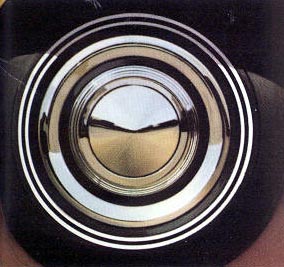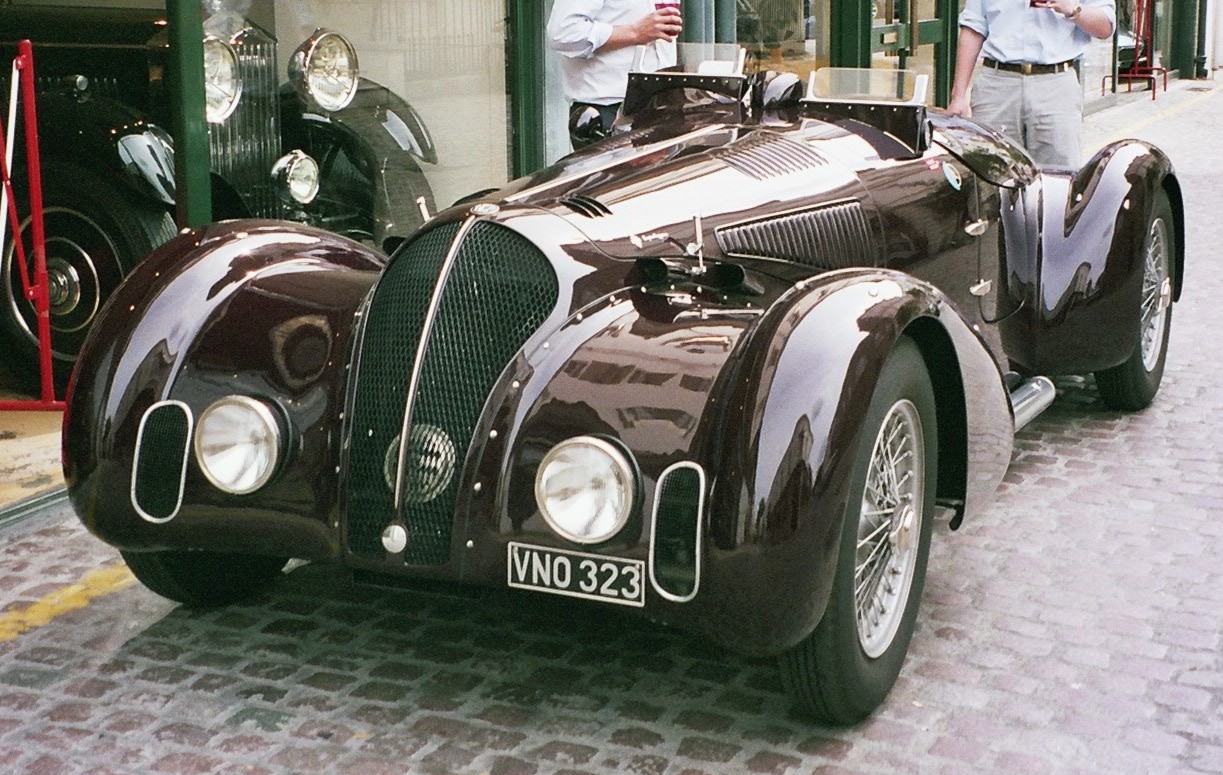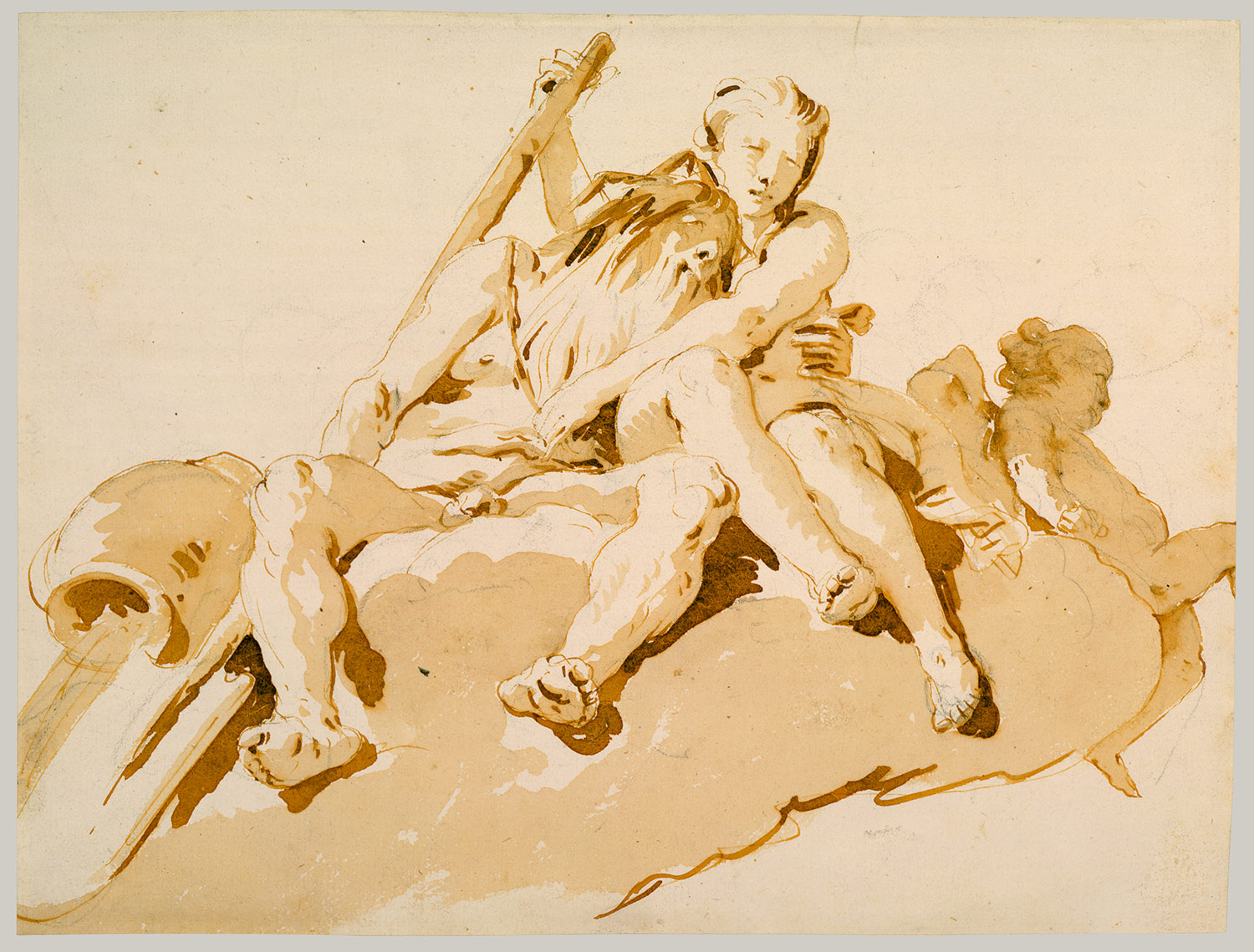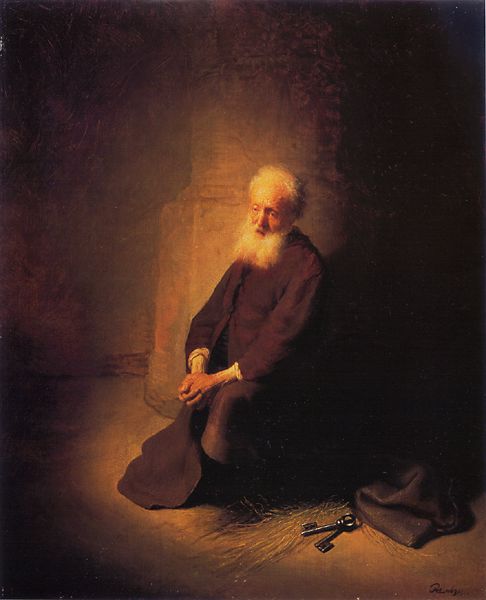Spencer Hallam discusses the art of illustration. Enjoy how-to art lessons along with work from the artist.
Wednesday, July 6, 2011
Painting Everything: Mostly Vegetables
Don't forget to eat these. I sometimes paint them too.
------------------------------
View more of my artwork at: www.spencerhallam.com
Labels:
carrot,
cloves,
eggplant,
jalapeno,
onion,
potato,
sunflower seeds,
Vegetables,
yellow tomatoes
Painting Everything: Strange Fruit
The supermarket can be a great place to learn to draw interesting textures and color combination.
------------------------------
View more of my artwork at: www.spencerhallam.com
Labels:
Citron,
Dragon Fruit,
Fruit,
Star Fruit,
Strawberry,
Watercolor
Sunday, April 17, 2011
Bob Dylan Illustrated
In this portrait of young Bob Dylan I chose to accentuate his hair. I achieved this by simplifying details in the face and making the hair as busy as possible.
------------------------------
View more of my artwork at: www.spencerhallam.com
Reflective CMYK and RGB surfaces
Using Photoshop I made multiple copies of the the Chrome study from an earlier post then colored each of them in a variety of hues, including CMYK (top row) and RGB (middle). I used a over layer set to the "overlay" blending mode then adjusted the opacity of the layer until I liked the result.
I find this to be a good representation of how reflected sky and ground affects the local color of a highly polished surface. It will be good reference for future illustrations.
------------------------------
View more of my artwork at: www.spencerhallam.com
Saturday, April 16, 2011
Keith Richards
As a departure, I've been doing some studies using famous musicians. A caricature of Keith Richards from The Rolling Stones almost draws itself. What a face! This could be a good way to start learning to draw leather or craggy rock formations.
Just kidding.
------------------------------
View more of my artwork at: www.spencerhallam.com
Sunday, April 3, 2011
Car Thumbnails
Car thumbnails from my imagination...
So far, it's seemed easiest for me to draw the wheels in more or less accurate perspective first in order to "ground" the car. Afterward I conceive of the larger shapes as simply as possible, then begin to fill in the details.
Since I don't draw cars very often I'm a little naive about the details and conventional proportions of conventional automobiles. So these ideas look a little outlandish after my slap dash guess work. This is all okay since repetition and creativity counts at this stage while I get a "feel" for it.
Cars from photo reference:
This makes a big difference. Since these cars already have their details in the right spot I only have to render them more or less faithfully. Each of these cars took about the same amount of time to draw as the thumbnails above, but are now much more rooted in observations in reality.
I often flip between drawing from observation and drawing from my imagination. Both methods influence each other in a positive way.
Media: pilot pen toned digitally.
------------------------------
View more of my artwork at: www.spencerhallam.com
So far, it's seemed easiest for me to draw the wheels in more or less accurate perspective first in order to "ground" the car. Afterward I conceive of the larger shapes as simply as possible, then begin to fill in the details.
Since I don't draw cars very often I'm a little naive about the details and conventional proportions of conventional automobiles. So these ideas look a little outlandish after my slap dash guess work. This is all okay since repetition and creativity counts at this stage while I get a "feel" for it.
Cars from photo reference:
This makes a big difference. Since these cars already have their details in the right spot I only have to render them more or less faithfully. Each of these cars took about the same amount of time to draw as the thumbnails above, but are now much more rooted in observations in reality.
I often flip between drawing from observation and drawing from my imagination. Both methods influence each other in a positive way.
Media: pilot pen toned digitally.
------------------------------
View more of my artwork at: www.spencerhallam.com
More on Rendering Chrome
Chrome is a three dimensional mirror-like reflective surface. Chrome adopts its color entirely from its surroundings. To render chrome from imagination you must choose the environment surrounding the object being constructed.
Since we usually see chrome on cars and since cars are usually outdoors and on the street, we commonly see the asphalt on the ground plane and blue sky above reflected onto the surface of the metal and reflected sharply back to our eyes. A different environment would create a different colors. For example, our car was parked in a grassy park during sunset (see below).
The brightest light reflects of upward facing surfaces from the sky. The sun, if visible, creates a bright white highlight. On downward facing surfaces we see the ground reflected. Distant objects reflect dramatically less light than the sky and appear almost black; the ground closest to the tire reflects light of brighter value, but still much darker than the sky.
Real world reflections are almost always more complicated than this since since any nearby object could be visible on a surface. When rendering from photo reference or from real life, this knowledge can help you understand and even simplify your observations.
Now that we've talked about chrome, we can begin to talk about how reflective, colored surfaces react to their environment.
Try it out!
------------------------------
View more of my artwork at: www.spencerhallam.com
 | |
| Blue sky and asphalt reflect clearly on the surface of chrome. |
Since we usually see chrome on cars and since cars are usually outdoors and on the street, we commonly see the asphalt on the ground plane and blue sky above reflected onto the surface of the metal and reflected sharply back to our eyes. A different environment would create a different colors. For example, our car was parked in a grassy park during sunset (see below).
 |
| left to right: sunset w/grass, snow w/blue sky, and sunny day at the beach |
The brightest light reflects of upward facing surfaces from the sky. The sun, if visible, creates a bright white highlight. On downward facing surfaces we see the ground reflected. Distant objects reflect dramatically less light than the sky and appear almost black; the ground closest to the tire reflects light of brighter value, but still much darker than the sky.
Real world reflections are almost always more complicated than this since since any nearby object could be visible on a surface. When rendering from photo reference or from real life, this knowledge can help you understand and even simplify your observations.
Now that we've talked about chrome, we can begin to talk about how reflective, colored surfaces react to their environment.
Try it out!
------------------------------
View more of my artwork at: www.spencerhallam.com
Labels:
Cars,
Chrome,
Color Theory,
digital studies,
illustration,
painting technique
Tuesday, March 15, 2011
Reflective Surfaces: Chrome and Automobile Paint Jobs
To render chrome effectively you must first choose an environment to be reflected onto the surface of the chrome. In the photo above you can clearly see the earthy color of the road below and the paler blue sky above. Downward facing surfaces will reflect the ground and upward facing surfaces will reflect the sky. Look closely at each ring on the hub cap and guess the angle by what is being reflected.
A reflective colored surface will do the same, but the effect is dramatically influenced by the local color beneath the reflection. A darker color will reflect its environment more clearly than a lighter finish, especially white.
All the lighter shapes on the surface of the above vintage automobiles are reflected images of the sky above. The local color is shifted toward a blue hue (making it more red-violet or violet) and lightened (desaturated with white) where the reflection is visible. These details are hard to invent, but we can begin to make some generalizations.
------------------------------
View more of my artwork at: www.spencerhallam.com
Labels:
Cars,
Chrome,
painting technique,
Reflective Surfaces
THE RAT RACE: Drawing and Painting Cars from Imagination
I was never much of a car and truck lover as a child so I tend to naturally shy away from drawing mechanical things. More recently I'm trying to be better at this, because it's a pretty big deficit if you don't have the ability as an illustrator. Luckily, many of the principles are the same as with painting a still life, portrait, or landscape. However, it does require a more slavish adherence to the rules of perspective.

Ultimately this was a successful piece for me. The biggest was to render the reflective surface of the car. In the end I arrived at a matte finished surface with some reflective elements added in to suggest the environment reflected onto the surface of the car. Reflections, are so variable, but I can find some tricks to inventing them. I'll post some new renderings as I do.
Below you can see the warmer color, higher value contrast, and greater level of detail used on the foreground edge of the car as opposed to the cooler, duller, soft-edged, low contrast relationships used rendered the back end. Since this transition occurs slowly over the surface and stays in the red hue family (red-orange to red-violet) our eye/brain perceives it as the same local color under varied lighting conditions.
------------------------------
View more of my artwork at: www.spencerhallam.com

Below are some steps I took in my process. Notice that I started with a horizon-line, rough 2pt perspective lines, and a gray background. Also, I worked out my value structure before I started adding color. Once these foundations are in place, the details are easy to place relative to the larger perspective and value structures.
Ultimately this was a successful piece for me. The biggest was to render the reflective surface of the car. In the end I arrived at a matte finished surface with some reflective elements added in to suggest the environment reflected onto the surface of the car. Reflections, are so variable, but I can find some tricks to inventing them. I'll post some new renderings as I do.
Below you can see the warmer color, higher value contrast, and greater level of detail used on the foreground edge of the car as opposed to the cooler, duller, soft-edged, low contrast relationships used rendered the back end. Since this transition occurs slowly over the surface and stays in the red hue family (red-orange to red-violet) our eye/brain perceives it as the same local color under varied lighting conditions.
------------------------------
View more of my artwork at: www.spencerhallam.com
Monday, March 14, 2011
The Effect of LIght on Local Color
I made the two diagrams below to help anyone trying to understand how color changes under different lighting conditions. I've started with a local color at top (sort of a dull red) and shifted the color to show it's possible variations under different color and intensity of light. Here are some vocabulary words to start.
Four "Dimensions" of color:
Hue: Generally this just means the "color." Blue, Red, Yellow-Green, and Magenta are all hues. White, gray, and black are not hues.
Value: The relative lightness or darkness of a color.
Chroma: Sometimes called color intensity, saturation, or brightness. This is the relative dullness or vividness of a color. Colors with low chroma are closer to gray while color with high chroma are colors in their unmixed brightest state.
Temperature: Colors are often referred to as warm or cool. This is a relative term and usually used to describe colors in comparison to each other. Orange is the warmest hue while blue is the coolest. Yellow and red are somewhere in between. White, neutral gray, and black are also considered cool while browns and warm grays are considered warm. If this is a little confusing it's because this concept is a little less measurable than the three above however it's often useful when comparing colors.
 |
| Gray swatches on the far left is there as a colorless value reference. The strip on the far right is a gray local color under warm light conditions. |
~ --- ~
Also see my post about how lighting conditions effect a range of different colors.
Hope this helps!
------------------------------
View more of my artwork at: www.spencerhallam.com
Friday, March 4, 2011
Simpifying Values and Value-Key
I created this post to discuss how an artist can think technically about achieving an intended value key discussed in the previous post. This method helps to simplify an overwhelming number of values into a more workable structure at early stages of a painting (a digital one in this case). The loose renderings below are quick head studies from my imagination as they might be lit for dramatic and compositional purposes.
I began with this basic head drawing which indicates some of the major planes and proportions. This step provides some structure on which to guide my value decisions.
Here I've used only four values to establish the primary value structure of the entire image. For this exercise I ignored any differences in edge quality between shapes. In this low-key image values 5,7, and 9 dominate while value 2 acts as a contrasting accent on the light side.
For this high-key image I used the same drawing and angle of light as a foundation, however, I've used values 1, 2, and 3 as the dominant values and value 6 as an accent in the spots that even in bright sunlight would remain relatively dark. Note that value 6, though used as a "dark" accent, is still in the middle of the scale. A darker value would appear EXTREMELY dark against such a light composition and appear much less realistic and thus more 2D or "graphic".
Thinking about value in this way also gives the artist clearer choices about where to simplify or otherwise edit out extraneous detail. In the darker study, the variety, detail, and focus happens in the light and the reverse is true for a lighter work.
------------------------------
View more of my artwork at: www.spencerhallam.com
I began with this basic head drawing which indicates some of the major planes and proportions. This step provides some structure on which to guide my value decisions.
Here I've used only four values to establish the primary value structure of the entire image. For this exercise I ignored any differences in edge quality between shapes. In this low-key image values 5,7, and 9 dominate while value 2 acts as a contrasting accent on the light side.
~ - ~
For this high-key image I used the same drawing and angle of light as a foundation, however, I've used values 1, 2, and 3 as the dominant values and value 6 as an accent in the spots that even in bright sunlight would remain relatively dark. Note that value 6, though used as a "dark" accent, is still in the middle of the scale. A darker value would appear EXTREMELY dark against such a light composition and appear much less realistic and thus more 2D or "graphic".
Thinking about value in this way also gives the artist clearer choices about where to simplify or otherwise edit out extraneous detail. In the darker study, the variety, detail, and focus happens in the light and the reverse is true for a lighter work.
------------------------------
View more of my artwork at: www.spencerhallam.com
Monday, February 28, 2011
Low-Key vs. High-Key Paintings
In order to create drama and a strong value structure for a painting, artists often choose to work in either a high or low "key" in which to compose their work. Thinking about a painting or drawing in this way helps to simplify value choices, emphasize areas of focus, and create a pleasing interaction of shapes when the painting is considered abstractly.
In a high-key painting, the majority of values are in the lighter than middle gray. Then, dark accents are used to lead the eye around the important areas of the painting. High-key paintings feel light and airy.
The Tiepolo watercolor above is a great example of a high-key composition. This style tends to mimic daylight by brightening the shadow side of the form and only darkening the areas that even strong ambient light has difficulty penetrating.
In a low-key painting, the majority of values are darker then middle gray. Light values are saved as accents to highlight the important elements in the painting. Low-key paintings feel mysterious and contemplative.
In this Rembrandt painting the elderly man's white hair face and hands command our attention since they stand out so dramatically from the darkened background. It appears that the man is lit by a torch or from a distant window opened up to reveal the sun low in the sky. The painting is composed almost like a yin-yang. The black keys stand out against the lit ground at bottom right adding a secondary focus to the work. Also notice that the shadow is simplified by jointing the dark side of the man's shirt with the cast shadow extending into the background.
Interestingly, the color scheme for both works is essentially identical. They are both rendered monochromatically in a gradient of burnt sienna or brown. The choice of key brings a distinctly different "feel" to each painting.
View more of my artwork at: www.spencerhallam.com
Sunday, February 27, 2011
Atmopheric Perspective
On a sunny clear day in Manhattan you can see the effects that the air has on the value contrasts of the distant buildings.
Through rain and fog this effect is made more apparent and the graying effect happens at a shorter distances. Droplets in the air cause light from the objects to refract and lose any distinct edge. Notice that foreground shadows are dark creating a balance of light and dark throughout the image.
------------------------------
View more of my artwork at: www.spencerhallam.com
~ - ~
Through rain and fog this effect is made more apparent and the graying effect happens at a shorter distances. Droplets in the air cause light from the objects to refract and lose any distinct edge. Notice that foreground shadows are dark creating a balance of light and dark throughout the image.
As we zoom in you can see the objects become gray and diffuse.
At this depth the values hardly get darker than a 50% gray.
------------------------------
View more of my artwork at: www.spencerhallam.com
Chiaroscuro from Observation
I took a walk today in Fort Greene Park in Brooklyn. I couldn't help taking a photo of this decorative cement sphere that guards the top of the steps. It shows nearly textbook chiaroscuro. Also, if you look close enough you can find the Empire State Building in the background.
You can see that the texture of the surface is most apparent between the lightest lights at left and the shadow at right. This is so for 2 reasons: First, at nearly tangent angles of light, the surface bumps are casting their own tiny shadows. Secondly, the mid-tone gives us the most detailed look at the surface since less light would limit the amount of light reaching our eyes and extreme daylight can bleach the light side.
At bottom right you can see a little bit of reflected light bouncing into the underside of the ball. Also, since there is so much ambient light, which lightens up the cast shadow, you can see that the occlusion shadow on the ball becomes emphasized. It looks like a black line around the edge of the ball.
Visit my Chiaroscuro Lesson to find out more details about drawing spheres.
------------------------------
View more of my artwork at: www.spencerhallam.com
Labels:
chiaroscuro,
Linear Perspective,
photo-reference
Monday, February 21, 2011
Tuesday, February 15, 2011
Megacerops with a Mechanical Pencil
I drew this Megacerops (Paleo-Rhino) from a life size sculpture at the American Museum of Natural History in New York that houses the extinct creature's fossilized bones. I thought this was a great example of drawing technique using only a mechanical pencil and a kneaded eraser. In the detail below you can see how each line of shading wraps around the form and the thicker outer lines work to differentiate the major masses that make up the beast.
This drawing started lightly with the biggest forms being outlined first to orient myself. I darkened the important edge lines as a went and understood that the foreground edges and the lines underneath his jaw would get the most weight. This and a number of other tricks resulted in a successful drawing.
Here's the same sculpture being carved by a sculptor that I found in a quick Google search.
------------------------------
View more of my artwork at: www.spencerhallam.com
Monday, February 14, 2011
New Pencil Drawing Lesson
Click the link in the Main Navigation or...
Tuesday, February 8, 2011
2D to 3D: A Lesson in Chiaroscuro
I've broken basic chiaroscuro into 8 steps (+1 step for that "colorized" look). Toward the end of this lesson I try to connect this painting method with fundamental drawing techniques and how to make choices about appropriate line quality in a pencil or pen drawing. Click the link to below to take to the lesson page.
How to make a 2D surface into a 3D illusion
------------------------------
View more of my artwork at: www.spencerhallam.com
Subscribe to:
Posts (Atom)





















 .
.











